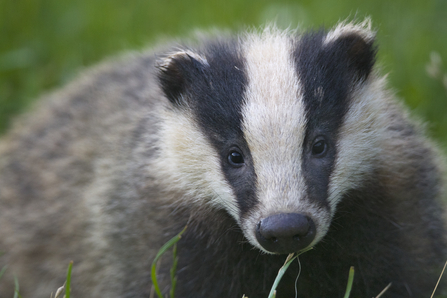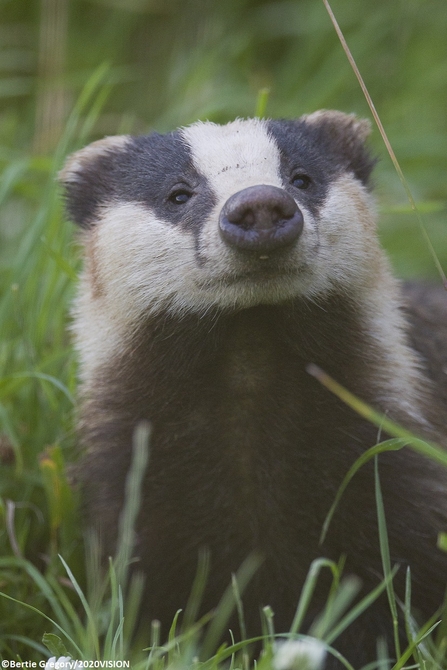
Bertie Gregory/2020VISION

Bertie Gregory/2020VISION
As a fresh wave of badger culling begins over a much wider area than in previous years, The Wildlife Trusts are calling on the Government to stop killing badgers. This will not eradicate Bovine TB in cattle.
Badger culls have been given the go-ahead in Cornwall, Devon, Dorset, Wiltshire, Gloucestershire, Herefordshire, Cheshire and Somerset. Almost 15,000 badgers have been killed since culls began in 2013[1]. The Wildlife Trusts are concerned that this culling is putting local populations of badgers at risk in affected parts of the British countryside. We urge Natural England to publish the information they hold on the impact of the badger cull on the wider environment.*
The Wildlife Trusts’ Director Steve Trotter says:
“A healthy wildlife rich natural world is valuable in its own right, and badgers are an important part of our countryside and culture. We work closely with many farmers, day in, day out, and we recognise the pain and hardship of those whose cattle herds have been devastated by bovine tuberculosis (bTB), but killing badgers will not solve the problem. Badgers are not the primary cause of the spread of bTB in cattle: the primary route of infection is cattle-to-cattle contact[2]. The Government's badger cull is flying in the face of science. It should be putting more resources into speeding up the development of an effective cattle vaccine, amongst other measures.”
Badgers are not the primary cause of the spread of bTB in cattle: the primary route of infection is cattle-to-cattle contact. The Government's badger cull is flying in the face of science. It should be putting more resources into speeding up the development of an effective cattle vaccine, amongst other measures

Bertie Gregory/2020VISION
In the absence of cattle vaccination, The Wildlife Trusts believe that vaccination of badgers is a more humane and effective solution to helping stop the spread of bTB than culling. A shortage of BCG vaccine put a temporary halt to badger vaccination in 2016 and Defra did not find alternatives. But this year some Wildlife Trusts sourced vaccine independently - these Wildlife Trusts are now re-commencing badger vaccination. The latest figures† show that on average it costs a Wildlife Trust just £82 to vaccinate an animal, as compared to the cull which cost £6,800 per badger between 2012-2014[3].
The Government spent almost £450,000 on communications equipment alone to support the culls between 2016-2017[4]. This money could have been invested in cattle vaccine research or used to vaccinate nearly 5,500 badgers.
The Wildlife Trusts call on the Government to:
• Stop the policy of badger culling
• Establish a full and independent inquiry into whether the culls to date have achieved their intended outcomes in reducing bTB in cattle
• Advance the development of a cattle vaccine, and complete the development of and licence the use of oral baited vaccine in badgers.
• Develop better biosecurity, bTB testing and cattle movement controls
Although The Wildlife Trusts don’t agree with the policy of badger culling, if it takes place robust monitoring programmes should be implemented in all cull zones.
Editor's notes:
Which Wildlife Trusts are currently vaccinating badgers? Derbyshire Wildlife Trust, Berks, Bucks & Oxon Wildlife Trust; Nottinghamshire Wildlife Trust
Badger Vaccination: Whilst vaccination doesn’t cure a badger of bTB it does slow the progression of the disease in an individual animal, and lowers the likelihood that the infection will be passed on. Badger vaccination can reduce the chance that a badger will test positive for bTB by as much as 76% (1). The Wildlife Trusts welcome the Government’s announcement that there will be enough supplies of vaccine to allow Defra’s Badger Edge Vaccination Scheme to resume in 2018.
Cull Zones: The Department for Environment, Food and Rural Affairs, Defra, has granted licenses in England to cull badgers where there’s a high risk of cattle being infected with bTB. Badgers are being culled because they can carry bovine Tb and pass on the disease to other animals; however, badgers are not the main route of infection for farmers’ herds - that comes from cattle to cattle contact. There are now 21 cull zones in eight counties: Cornwall, Devon, Dorset, Wiltshire, Gloucestershire, Herefordshire, Cheshire and Somerset.
References:
1 These figures are available on the Gov.uk website here: https://www.gov.uk/government/policies/bovine-tuberculosis-bovine-tb
* The Information Commissioner’s Office (ICO) this summer ruled that Natural England must release this information or face the High Court. You can see the Information Commission Office’s decision notice here: https://ico.org.uk/media/action-weve-taken/decision-notices/2017/2014420/fer0659789.pdf
2 Donnelly and Nouvellet (2013) The Contribution of Badgers to Confirmed Tuberculosis in Cattle in High-Incidence Areas in England. PLoS Currents: Outbreaks
† Figures newly compiled from 2015 Wildlife Trust vaccination schemes
3 These figures were provided in response to a Freedom of Information (FOI) request, which is available in full on the Gov.uk website. NB: The exact figure is £6785.
4 The Government publishes all spending over £25,000 here: https://data.gov.uk/dataset/financial-transactions-data-defra